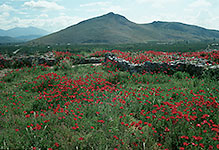
Landscapes
Landscapes, Seascapes, Cityscapes, etc.

#08011156
Ramses II appears in these statues as Osiris (crossed arms), as Pharaoh of Upp...

#08011157
View of the obelisk of Queen Hatshepsut (1490-1469 BCE), seen ac...

#08011158
The Great Enclosure of the Temple of Amun (13th BCE). In the foreground blocks...

#08011159
Overall view of the Temple of Amun with the obelisk (13th B...

#08011160
The Sacred Lake, North of the Second and Third Courts, Temple of Karnak, Egypt....

#080112 1
Jubilee chapel of Pharao Sesostris I (1971-1928 BCE), Karnak, Egypt. It is bui...

#080112 6
The Colossi of Memnon, a name given them by Greek and Roman travellers, Medine...

#080112 7
The Ramesseum, dedicated to Pharaoh Ramses II and to "Amun-United-with-Eterni...

#080112 8
During the battle of Kadesh, the chariot of Pharaoh Ramses II (13...

#080112 9
Pylon of the Ramesseum, Medinet Habu, temple dedicated to Rams...

#08011210
Valley of the Kings, a deep cleft in the limestone hills opposite Luxor, Eg...

#08011211
Valley of the Kings, a deep cleft in the limestone hills opposite Luxor, Eg...